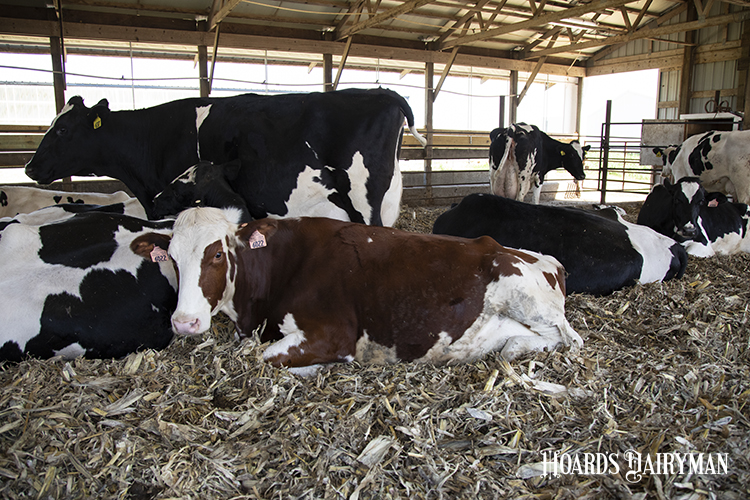
Just as facilities with the right dimensions and amenities encourage cow comfort and production, an environment that limits a cow’s natural abilities can create problems for the animal to stay healthy and perform at its best. This is never more critical than when a cow is most vulnerable around calving. Everything a dairy wants to see happen in their transition cows, from avoiding disease to efficiently contributing to the herd, can be influenced by dry cow and fresh cow housing and management, said Lindsay Ferlito in a Cornell University Transition Cow Tuesday presentation.
A large, well-bedded lying surface was at the top of Ferlito’s list, and she recommended at least 100 square feet per cow in a bedded pack barn. To further ensure these cows have enough room, aim to keep the stocking density below 100% in prefresh as well as fresh pens. The Cornell Cooperative Extension regional dairy specialist said that 80% stocking is ideal, but she recognized that is not always practical.
A number to keep in mind when setting up or building maternity pens is your average number of calvings each month. Ferlito’s advice is to have pens large enough to accommodate 140% of that average. “Some farms have months with more than average calvings and others with fewer, so we have to make sure we’re accounting for those busy months,” she explained.
Lower stocking densities also allow cows to separate themselves from other animals as they prepare to calve, which is a natural inclination in many animals, Ferlito cited. Providing some low walls or a closed-off corner can also be helpful for this behavior as long as the barn remains well-ventilated.
Stocking density doesn’t only refer to stall numbers; it means animals must have enough room at the feedbunk and waterers, too. Ferlito recommended providing at least 3.5 inches of linear water space per cow and two waterers per pen so a boss cow can’t prevent others from drinking. Allow 30 inches of feedbunk space per animal, and consider headlocks to prevent aggressive behavior at the bunk.
“Especially if we’re going to be comingling heifers with cows, headlocks can give a little more protection from being displaced,” she pointed out.
Having separate pre-fresh areas for heifers and cows is beneficial if it is possible, Ferlito said. But if one group works better for the buildings you have, remember to size stalls appropriately, and not overcrowding becomes even more important. Also aim to limit pen moves and the social stress that comes with them. Pen moves should definitely be avoided in the week before expected calving because effects can be seen up to three days after calving, she advised. “Just in time” pen moves can be okay, Ferlito said.
Finally, she reiterated the importance of heat abatement for dry and prefresh cows. Cooling pays off in more milk from the cow and healthier calves, as evidenced by larger birth and weaning weights and greater IgG absorption, Ferlito described.








